Fresh connections reinforce trade facilitation in ASEAN
Over the next couple of months, representatives from the Ministry of Industry and Trade (MoIT) and the Ministry of Planning and Investment are expected to work with peers from the other ASEAN member states to discuss a new version of the ASEAN Trade in Goods Agreement (ATIGA), first inked in 2009.
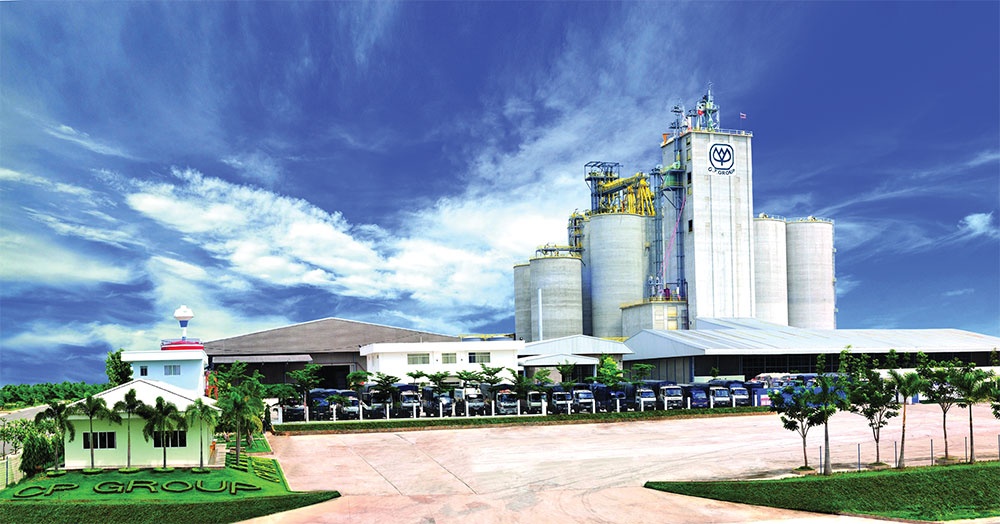 |
| Fresh connections reinforce trade facilitation in ASEAN, photo Le Toan |
The updated ATIGA will be among many measures for ASEAN to increase their trade and investment ties, amid climbs in intra-bloc trade and investment flows.
“The upgrade negotiations are both timely as the region is on the road to recovery from the COVID-19 pandemic, and importantly following the entry into force of the Regional Comprehensive Economic Partnership Agreement on January 1,” said a statement from the ASEAN Secretariat.
Under the agreement’s commitments, ASEAN member nations pledged to remove tariffs to 98.6 per cent of the total goods and products in 2021. Brunei, Indonesia, Malaysia, Philippines, Singapore, and Malaysia have eliminated 99.3 per cent of the tariffs and the remaining four (Cambodia, Laos, Myanmar, and Vietnam), 97.7 per cent.
According to the MoIT, the deployment of regional economic commitments including the ATIGA has benefited many businesses in Vietnam as the import tariffs of foodstuff products into regional markets have almost been removed so far.
In a specific case, in the first nine months of this year, locally-invested TH Group has marketed more than 30 product lines in Singapore thanks to reduced tariffs. The group has a vision that its products will be sold at more than 1,000 retail stores and supermarkets in the island state by the end of 2023.
TH and Singapore’s HAO Mart in February established strategic cooperation on consuming and promoting these products in Singapore, which the Vietnamese firm considers a market of high potential in Southeast Asia.
“TH Group sees that all world-class e-commerce brands have set foot in Singapore, so our presence in this market, which will then be expanded to Malaysia, will feature the strength of the brand in Asia,” said Hoang Thi Thanh Thuy, director of International Marketing at TH Group.
Piyapong Jriyasetapong, chairman of the Thai Chamber of Commerce and Industry in Vietnam, told VIR that the implementation of regional commitments under deals like the ATIGA offers Thai firms opportunities to export goods to and invest into Vietnam.
“A very important factor that attracts Thailand’s investors into Vietnam is that this nation is now entering a golden economic decade. We believe Thai investors shall take action in Vietnam even more in the coming years,” said Jriyasetapong.
Thai investors are interested in conducting business and investment in a series of sectors in Vietnam, he continued. “These sectors include feed and farming, renewable energy, packaging, retail and distribution, petrochemicals, foodstuff processing, plastic products, and energy drinks. Growing local consumption in Vietnam will be one of the key drivers of economic growth.”
Expanding trade
The MoIT last week reported that in the first nine months of this year, total exports turnover from Vietnam to other regional nations is estimated to hit more than $26.1 billion – up over 25.8 per cent on-year, and businesses in Vietnam used an estimated $35.5 billion to import goods from these markets, up 17.2 per cent on-year. Total trade deficit reached $9.4 billion, down 1.6 per cent as compared to the same period last year.
The MoIT reported that it has combined with the Ministry of Finance’s General Department of Vietnam Customs to successfully connect with the ASEAN Single Window, an environment that connects and integrates the national single window of each ASEAN member state.
According to Pham Quynh Mai, vice director of the MoIT’s Department of Multilateral Trade, the ASEAN Economic Community envisions a single market and production base characterised by the free flow of goods, services, and investments, as well as a freer flow of capital and skills, with a tariff liberalisation of up to 98-99 per cent so far.
“After 27 years of access to ASEAN, the Vietnamese economy has seen spectacular strides forward, with per capita GDP increasing by 13 times, and GDP scale growing by more than 17 times to over $362 billion in 2021,” Mai said. “Vietnam’s total exports soared from $5.2 billion in 1995 to $336.3 billion last year when Vietnam’s exports to ASEAN member states sat at $41.1 billion – up 34.9 per cent on-year.”
Currently, authorities of Vietnam are working with those from Singapore, Thailand, Indonesia, and Malaysia on plans to connect Vietnamese businesses and investors with those from these nations via visits or seminars.
For example, many Indonesian firms want to boost exports of coal, vegetable oil, motors and vehicle equipment, iron and steel, base metals, machines and tools, paper, computer components, and chemicals to Vietnam. They also wish to forge investment ties with Vietnamese partners.
Meanwhile, Singaporean businesses wish to engage in Vietnam in the sectors of supply chains and logistics, green economy, and digital economy.
Additional driver
According to the Ministry of Planning and Investment (MPI), another enabler for Vietnam to further deepen its trade and investment ties with ASEAN is the ASEAN Comprehensive Investment Agreement (ACIA).
In February, Vietnam adopted the fourth protocol amending the ACIA. The agreement aims at promoting both trade and investment across the ASEAN region by building an open and transparent investment regime. Vietnam sees a significant opportunity to benefit from enhanced trade activities in the region.
Without restrictions or discrimination, other member states will be more willing to participate in trade in Vietnam, and vice versa.
What is more, the ACIA focuses on several areas – manufacturing, agro-forestry-fisheries, and mining and quarrying.
Thus, Vietnam’s trade and investment activities are expected to benefit as a result of the ACIA and the fourth amendment, said pan-Asia consultancy Dezan Shira & Associates.
The MPI reported that as of September 20, total investment from ASEAN member states in Vietnam hit more than $99.48 billion, with Singapore’s investment worth $71.15 billion, followed by Thailand ($13 billion), Malaysia ($13 billion), Brunei ($961 million), Indonesia ($621.3 million), the Philippines ($607 million), Laos ($71 million), and Cambodia ($69.12 billion).
For example, during January-September 20 this year, Singapore became the largest investor in Vietnam with a total new investment of $4.75 billion, Thailand with $254.5 million, and Malaysia at $175 million.
Thailand’s Siam Cement, for example, has expanded operations in Indonesia, Singapore, and Vietnam, and increased its investment in retail and logistics businesses in Cambodia, Indonesia, Myanmar, the Philippines and Vietnam. It is building a $5.1 billion petrochemical complex in Vietnam, which is expected to be completed in 2023.
In the past year, Thailand’s PTT Global Chemical also expanded operations and partnerships in manufacturing and retail activities in Cambodia, Indonesia, Laos, Myanmar, and Vietnam. Moreover, Thailand’s Siam Commercial Bank expanded its activities in Myanmar and Vietnam to offer more digital products and services in these host countries. Kasikorn Bank has also opened a branch in Vietnam and diversified its service in Laos.
Elsewhere, fintech platform Kredivo from Indonesia has also expanded its online lending business to Vietnam.
| Registered foreign direct investment in Vietnam was flat at $15.7 billion in 2021. Investment from two major economies (Singapore and South Korea) was unchanged, but inflows from Japan increased 3.5 times to $2 billion, from Hong Kong by 5 per cent to $1.2 billion, and from mainland China by 8 per cent to $1.5 billion. These five economies accounted for 80 per cent of inflows, with Singapore alone accounting for nearly half of that share. The level of investment was sustained by strong overseas investment in manufacturing and in electricity production and distribution – the two largest recipients, accounting for 77 per cent of inflows. Investment in real estate continued to grow – up 41 per cent to $1.4 billion – reflecting the continued economic growth and industrial development in the country during the pandemic years. Some big-ticket projects in 2021 have helped sustain the high level of registered investment. They included a $3.1 billion liquefied natural gas power plant in the Mekong Delta province of Long An with participation from companies from Singapore; LG Display of South Korea, which is expanding production facilities in the northern port city of Haiphong involved an increase in capital by $2.1 billion; Maruben of Japan, which together with Vietnam Trading Engineering is developing the $1.3 billion O Mon II gas-fired power plant; and Samsung of South Korea, which invested further in the country with an electronics production facility estimated to be worth $952 million.Source: ASEAN Investment Report 2022 |
| Ha Kim Ngoc - Deputy Minister of Foreign Affairs
Over the past two years, ASEAN has demonstrated its bravery and resilience, promptly and effectively responding to the challenges. The outbreak of the COVID-19 pandemic has disrupted the activities of international life. However, under the guidance of Vietnam during the country’s 2020 chairmanship, ASEAN has shown the initiative to adapt and promptly switch meetings and activities to the online format, thereby maintaining the momentum of regional cooperation and linkages and community-building efforts, responding to the pandemic together. ASEAN has quickly approved and deployed initiatives such as the establishment of the COVID-19 ASEAN Response Fund, the establishment of the Regional Reserve of Medical Supplies for Public Health Emergencies, and the proposal to establish the ASEAN Centre for Public Health Emergencies and Emerging Diseases, thereby promptly mobilising ASEAN’s resources and the support of partners for pandemic prevention and control. ASEAN has shrewdly and effectively handled the competition among major countries through a balanced and harmonised approach on the basis of ensuring the operating principles as well as procedures of the mechanisms/forums initiated by ASEAN and with the participation of major countries such as ASEAN Regional Forum, East Asia Summit, and ASEAN Defence Ministers’ Meeting Plus. At the same time, ASEAN has also expressed an independent and neutral stance, wishing major countries to compete in a fair and responsible manner and contribute to the region’s peace, stability, and prosperity. This is clearly reflected in the ASEAN Foreign Ministers’ Statement on the Importance of Maintaining Peace and Stability in Southeast Asia in August 2020. Along with efforts to fight against COVID-19, ASEAN soon promoted post-pandemic recovery measures, including the development of the ASEAN Comprehensive Recovery Framework and an implementation plan to minimise the impacts of the pandemic and boost comprehensive recovery in ASEAN. The bloc also signed an agreement on the ASEAN Travel Corridor Arrangement Framework which is an initiative to facilitate essential official and business travels among ASEAN member states while the pandemic is still not completely brought under control. These measures have brought about positive effects, contributing to helping ASEAN countries to both control the pandemic and gradually reopen their economies, promoting cooperation in socioeconomic development and recovery. Denny Abdi - Indonesian Ambassador to Vietnam
The trade and investment between Indonesia and Vietnam continue to grow progressively. In 2019, the total trade of Indonesia and Vietnam had reached $9.07 billion, while in 2020 it decreased to $8.21 billion due to the pandemic. In 2021 bilateral trade between two countries reached $115 billion, up 40 per cent compared to 2020. In the first eight months of 2022, the figure reached $9.3 billion, up 25.3 per cent compared to the same period in 2021 of $7.49 billion. Furthermore, more than 30 Indonesian companies have been operating in Vietnam. According to records in June, accumulatively Indonesian investors had 101 projects in Vietnam, with total investment value at $618 million. With strong determination to further collaborate and promote economic cooperation, in 2022 both countries agreed to set up new target of bilateral trade, which is to reach $15 billion by 2028. Indonesia and Vietnam represent 55 per cent of ASEAN’s population and 45 per cent of its economy. Both countries are among the most promising economies among ASEAN countries, which carries great future potential as a driving force for economic growth. There are many potential areas of common interest that could be explored to further boost trade and investment of both countries, such as fisheries and agriculture, high tech industries, digital economy, electric vehicle, and renewable energy. In order to strengthen economic cooperation, both countries are committed to facilitate trade and investment exchanges. The Indonesian Embassy in Hanoi regularly organise business forums to explore the opportunities for mutual benefit and promote cooperation for the business community. The embassy also actively facilitates Indonesian business to join trade and business expos in Vietnam, including to gather its businesses to participate at the upcoming Vietnam Medipharm Expo 2022, a conference on promoting export of agriculture and aquaculture products of the Mekong Delta province of Ben Tre, an international exhibition of food industry in Ho Chi Minh City, the third Vietnam International Supporting Industry and Manufacturing Exhibition, and the 20th Vietnam International Trade Fair. This year, Indonesia’s biggest annual exhibition, the 37th Trade Expo Indonesia that covers trade, tourism, and investment will be held on October 19-23 in Tangerang of Indonesia and online from October 19 to December 19, under the theme of strengthening global trade for stronger Recovery. The embassy organised a business consultation on October 5 to attract potential participants to the expo in order to reinvigorate trade connection and ties between the two countries to recover together. Jaya Ratnam - Singaporean Ambassador to Vietnam
Singapore and Vietnam’s strong economic, trade, and investment ties are underpinned by decades of consistent and meaningful engagements between our governments and peoples. During President Nguyen Xuan Phuc’s state visit to Singapore earlier this year, President Phuc and President Halimah Yacob reaffirmed these ties and committed to further collaboration. Our leaders also oversaw the signing of an MoU on economic and trade cooperation between our two countries. We continued to build on this momentum with further high-level visits by Singaporean Deputy Prime Minister and Coordinating Minister for Economic Policies Heng Swee Keat in September, and Singaporean Minister for Manpower and Second Minister for Trade and Industry Dr. Tan See Leng in August. We are starting from a very strong base. Singapore has been the leading source of foreign direct investment in Vietnam for the past two years. This demonstrates the confidence that Singapore investors have in Vietnam’s economic potential and the Vietnamese government’s efforts to boost the ease of doing business here. Despite the disruptions of the pandemic and the current global economic downturn, Singaporean companies continue to seek new opportunities to diversify and expand their presence in Vietnam. I would like to highlight three sectors. The first sector is supply chains and logistics. Recent global supply chain shocks have shown everyone the importance of this sector. Singapore companies look forward to contributing further expertise, human resources training, and digital solutions to develop the logistics sector in Vietnam. To cite just one example, when completed, the multimodal Vinh Phuc ICD Logistics Centre established by Singapore’s YCH Group and Vietnam’s T&T Group will strengthen trade connectivity and supply chain resilience in our region. The second sector is the green economy. Singapore is keen to work with Vietnam as it increases investments in sustainable infrastructure and renewable energy, with the ambitious goal of achieving net-zero carbon emissions by 2050. The collaboration between Sembcorp and Vietnam Electricity is one promising partnership in this area. Sembcorp is also working hard to upgrade its network of Vietnam-Singapore Industrial Parks to integrate sustainability and innovation. The third sector is the digital economy. Growing the digital economy will be a key priority for both our countries in the coming decades. Vietnam has identified the digital economy as one of the key drivers of growth that will propel Vietnam towards its ambition of becoming a high-income country by 2045. Vietnam’s fast-growing middle class and young population make this sector particularly attractive to Singapore companies in e-commerce, digital payments, smart cities, and digital trade. Nikorndej - Balankura Thai Ambassador to Vietnam
Our world is rapidly changing and constantly marked with uncertainty. No-one anticipated the COVID-19 pandemic and that, as a result, we would enter a global disruption and a new normal lasting over two years. Our geopolitical landscape has also changed in that time, influenced by geoeconomic volatility. As we are transiting into a multipolar environment, power is being diffused to middle power countries. Consequently, I believe that regionalism is once again becoming more and more important as middle power countries come together to empower themselves through coalition-building and agenda-setting for more relevance in shaping the new and emerging international system. This is why ASEAN and its mechanisms and agreements, including the ATIGA, are so vital. Not only do they provide standardised ways to increase intra-ASEAN trade, but it also sets the tone for trade between ASEAN and other countries, allowing the bloc to increase its strategic maneuver with collective voice and a stronger leverage. It is my conviction that Thailand and Vietnam can work together to help increase ASEAN centrality and its relevance, as well as its strategic positioning. Bilaterally, our trade and cooperation in all areas has continued to grow in tangible and meaningful ways. Last year, marking the 45th anniversary of the establishment of our diplomatic relations, the Thai side established the Thai Chamber of Commerce and Industry in Vietnam. In all hope and likelihood, by 2026 – our Golden Jubilee anniversary of diplomatic relations, our trade will reach $25 billion, a goal set by our leaders. Internationally, Thailand and Vietnam are cooperating on issues of common interest. This year, as Thailand will host the APEC Summit in November, and Thailand and Vietnam are very much aligned on issues such as bio-circular-green economy, free trade area of the Asia-Pacific, and safe passage agenda, with a view to fostering relevance and leverage. Together, we can work to ensure a more prosperous and sustainable future for our countries. |
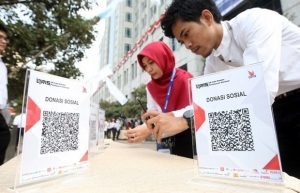 | Five ASEAN countries to connect to payment system in 2023 A cross-border payment system between the five ASEAN countries of Thailand, Singapore, Malaysia, the Philippines, and Indonesia will be fully connected next year, according to Bank Indonesia (BI) Governor Perry Warjiyo. |
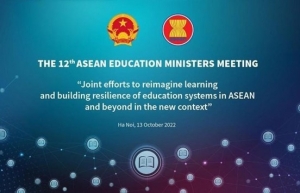 | ASEAN education ministers to meet in Hanoi next week The 12th ASEAN Education Ministers Meeting (ASED) and related meetings will be held in Hanoi from October 11-14, with the participation of education ministers, senior officials and experts from 10 ASEAN member states and eight partner countries. |
What the stars mean:
★ Poor ★ ★ Promising ★★★ Good ★★★★ Very good ★★★★★ Exceptional
Related Contents
Latest News
More News
- Global partnerships key to Vietnam’s IFC development (December 26, 2025 | 16:18)
- Vingroup pulls out of bid to invest in North-South high-speed railway (December 26, 2025 | 11:42)
- Strengthening supply chains through trade promotions and customs reform (December 24, 2025 | 14:00)
- PM orders investment model for North–South high-speed rail (December 22, 2025 | 17:43)
- LS Eco Energy to invest in Vietnam rare earth sector (December 22, 2025 | 17:31)
- Government moves to establish International Financial Centre (December 21, 2025 | 21:00)
- Vietnam's IFC to target global investment flows (December 21, 2025 | 18:00)
- Two national hospitals expand capacity with new facilities (December 20, 2025 | 09:00)
- Ha Tinh breaks ground on major Vingroup industrial and energy projects (December 19, 2025 | 18:24)
- EVN launches major power infrastructure projects nationwide (December 19, 2025 | 18:17)

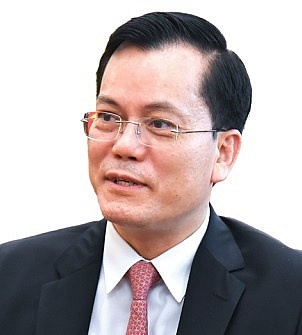
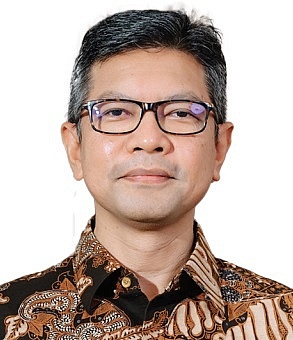

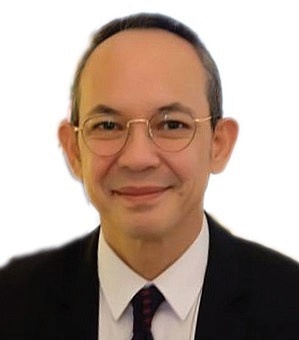
 Tag:
Tag:





















 Mobile Version
Mobile Version